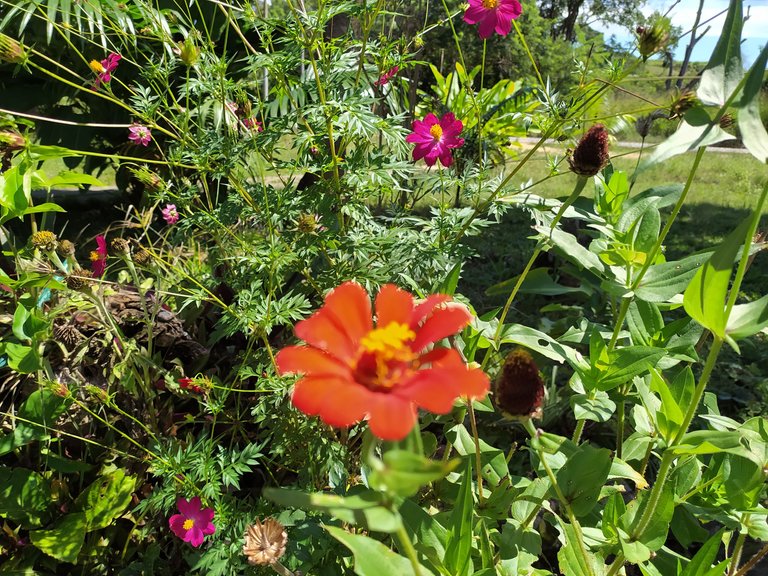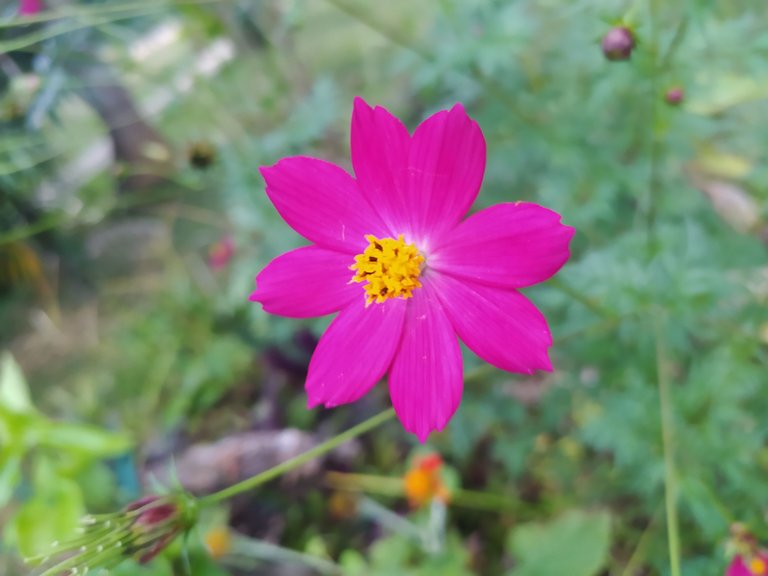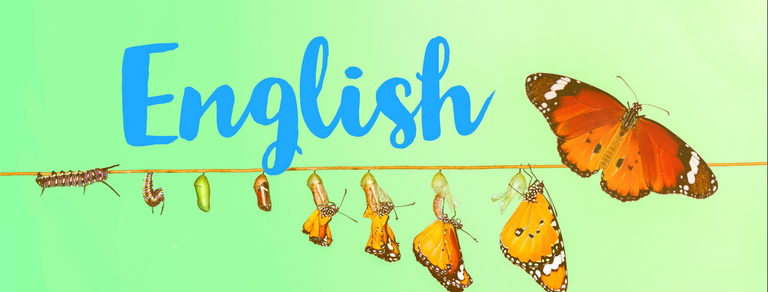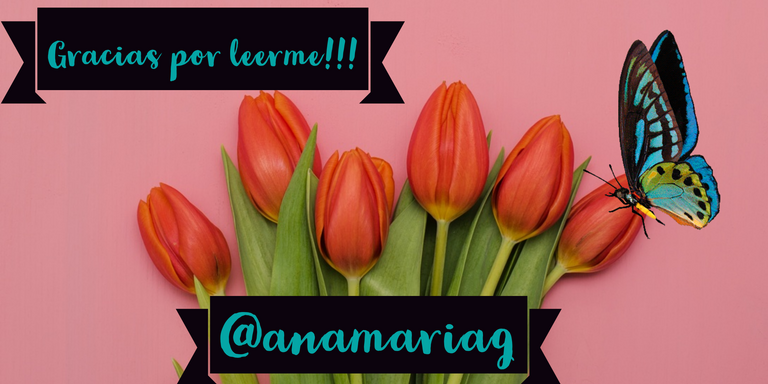Colores del Jardín 💐 (Esp-Eng)
#AmazingNature competencia organizada por @bucipuci
Tema: Colorido.
Aquí, puedes encontrar más información sobre el concurso.
Saludos naturales a esta comunidad de #AmazingNature que como siempre me brinda la oportunidad de dar a conocer las bellezas naturales que puedo disfrutar a mi alrededor y no sólo en mi jardín, sino también en los que veo mientras voy de camino a algún lugar.

Quién mejor que las flores para brindar los colores más espectaculares en la naturaleza, van desde los más tenues hasta los más intensos como estos que vemos en esta fotografía.

Una de las especies, la naranja, es La zinnia peruviana es nativa de las Indias Occidentales y América Latina, incluyendo el norte de México y las Antillas Mayores, y hasta el sur como el Paraguay. También se cultiva extensamente como ornamental y se naturaliza en muchos lugares, entre el cual China, la India, Australia, África, y los Estados Unidos, incluyendo Hawai.
Crece espontáneamente en el campo y en diferentes lugares del planeta. Está muy extendida en la zona mediterránea (Europa meridional y norte de Oriente próximo). Pertenece a la familia de las Asteraceae (Compuestas) que incluye alrededor de 20.000 especies, entre las que se encuentran desde árboles, arbustos y plantas herbáceas.
Fuente

La otra especie, la fucsia, es originaria de Belice, Colombia, Costa Rica, El Salvador, Guatemala, Honduras, México (Chiapas, Michoacán, Sinaloa, Tabasco, Tamaulipas, Veracruz y Yucatán), Nicaragua, Panamá y Venezuela donde crece prevalentemente en los pastizales húmedos.
El nombre del género es el sustantivo griego “κόσμος” (kosmos) = ornamento; el nombre de la especie es el adjetivo latino “caudatus, a, um” = caudado, dotado de cola.
Nombres comunes: cosmos, Spanish needle, wild cosmos (inglés); cosmos sauvage (francés); kenikir (javanés); hulam raja, ulan raja (malés); daoruang-phama, khamhae (tailandés); rau sao nhái (vietnamita).
Especie ornamental de fácil cultivación y veloz crecimiento que aun siendo originaria de regiones tropicales y subtropicales es cultivable, siendo anual, en una amplia variedad de climas, del templado cálido al continental, donde es utilizada, junto a sus variedades, en los jardines en grupo o para borduras, también mixtas. Requiere pleno sol y suelos drenantes, preferiblemente fértiles, con moderados riegos en los climas con veranos secos; se adapta bien a la cultivación en contenedor.
Fuente
Observen esta belleza de espectáculo, es la naturaleza regalándonos sus colores más intensos, diciéndonos aquí están para admirar, te las obsequio porque me gusta darte lo más bello.
Por eso la invitación es a cuidar nuestra Pacha Mama, que se esmera en darnos lo mejor, por más sencilla que sea, es parte de su riqueza.
Saludos Naturales!🍃Un Abrazote!🤗



Garden Colors 💐
AmazingNature contest organized by @bucipuci.
Theme: coloring.
Here, you can find more information about the contest.
Natural greetings to this #AmazingNature community that as always gives me the opportunity to make known the natural beauties that I can enjoy around me and not only in my garden, but also in those I see on my way somewhere.

Who better than flowers to offer the most spectacular colors of nature, ranging from the faintest to the most intense as these we see in this photograph.

Zinnia peruviana is native to the West Indies and Latin America, including northern Mexico and the Greater Antilles, and as far south as Paraguay. It is also widely cultivated as an ornamental and is naturalized in many places, including China, India, Australia, Africa and the United States, including Hawaii.
It grows spontaneously in the field and in different parts of the planet. It is widespread in the Mediterranean area (southern Europe and northern Middle East). It belongs to the family Asteraceae (Compositae), which includes about 20,000 species, including trees, shrubs and herbaceous plants.
Source

The other species, is native to Belize, Colombia, Costa Rica, El Salvador, Guatemala, Honduras, Mexico (Chiapas, Michoacán, Sinaloa, Tabasco, Tamaulipas, Veracruz and Yucatán), Nicaragua, Panama and Venezuela, where it grows predominantly in humid grasslands.
The name of the genus is the Greek noun "κόσμος" (kosmos) = ornament; the name of the species is the Latin adjective "caudatus, a, um" = caudate, endowed with tail.
Common names: cosmos, Spanish needle, wild cosmos (English); cosmos sauvage (French); kenikir (Javanese); hulam raja, ulan raja (Malay); daoruang-phama, khamhae (Thai); rau sao nhái (Vietnamese).
Easily cultivated and fast-growing ornamental species that, although native to tropical and subtropical regions, is cultivable, being annual, in a wide variety of climates, from warm temperate to continental, where it is used, along with its varieties, in gardens in groups or for borders, also mixed. It requires full sun and draining soils, preferably fertile, with moderate watering in climates with dry summers; it adapts well to container culture.
Source
Observe this beauty of spectacle, it is nature giving us its most intense colors, telling us here they are to admire, I give them to you because I like to give you what is most beautiful.
That is why the invitation is to take care of our Pacha Mama, who strives to give us the best, no matter how simple it may be, it is part of her wealth.
Natural Greetings!🍃A big hug!🤗

Fotografías y texto propiedad de la autora.
Banner y separadores CC Express.

Congratulations @anamariag! You have completed the following achievement on the Hive blockchain and have been rewarded with new badge(s):
Your next target is to reach 80 posts.
You can view your badges on your board and compare yourself to others in the Ranking
If you no longer want to receive notifications, reply to this comment with the word
STOPTo support your work, I also upvoted your post!
Check out the last post from @hivebuzz:
https://twitter.com/galindez_suarez/status/1576440325216010240
The rewards earned on this comment will go directly to the people sharing the post on Twitter as long as they are registered with @poshtoken. Sign up at https://hiveposh.com.
Thank you for entering the contest.
FREE TOPIC has no topic. "Color" was just a suggestion for the content of the article :-).
However, your article is really "colorful" :-)
I appreciate your work and your post has been manually curated by Botanic team @oscurity on behalf of Amazing Nature Community. Keep up the good work!
Thank you @hive-127788 @oscurity for your support and motivation
beauty post very informative
We appreciate your work and your post was manually curated by @none! from the DNA team!
Reach us on Discord to learn more about the project!
Thank you @dna.org @none for your support and motivation 🤗